Titan Touchdown
Titan Touchdown
On Jan. 14, 2005, ESA’s Huygens probe made its descent to the surface of Saturn’s hazy moon, Titan. Carried to Saturn by NASA’s Cassini spacecraft, Huygens made the most distant landing ever on another world, and the only landing on a body in the outer solar system. This video uses actual images taken by the probe during its two-and-a-half hour fall under its parachutes.
More Posts from Astrotidbits-blog and Others
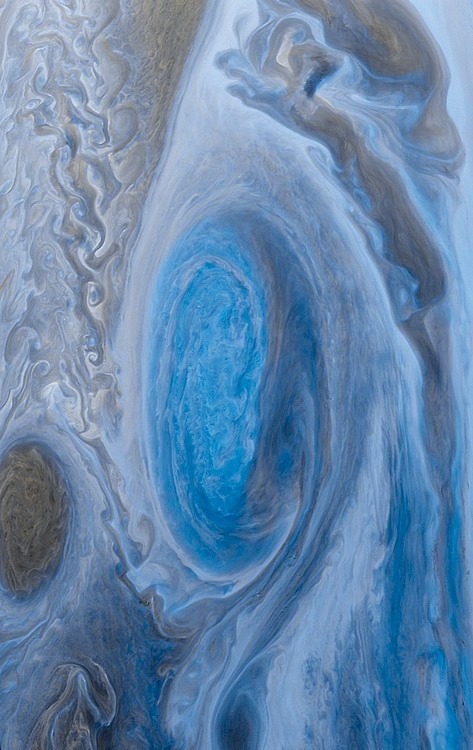
Jupiter’s Great Red Spot from Voyager 1 Color Inverted
What will become of Jupiter’s Great Red Spot? Recorded as shrinking since the 1930s, the rate of the Great Red Spot’s size appears to have accelerated just in the past few years. A hurricane larger than Earth, the Great Red Spot has been raging at least as long as telescopes could see it. Like most astronomical phenomena, the Great Red Spot was neither predicted nor immediately understood after its discovery. Although small eddies that feed into the storm system seem to play a role, a more full understanding of the gigantic storm cloud remains a topic of continued research, and may result in a better understanding of weather here on Earth. The above image is a digital enhancement of an image of Jupiter taken in 1979 by the Voyager 1 spacecraft as it zoomed by the Solar System’s largest planet. NASA’s Juno spacecraft is currently heading toward Jupiter and will arrive in 2016.
Image Credit: NASA, JPL; Digital processing: Björn Jónsson (IAAA), Color: thedemon-hauntedworld
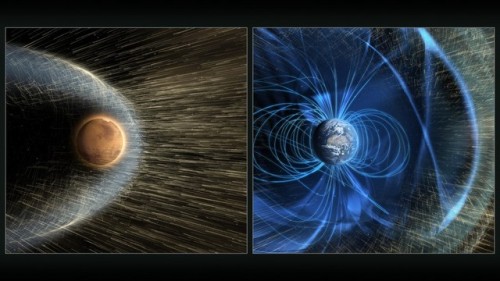
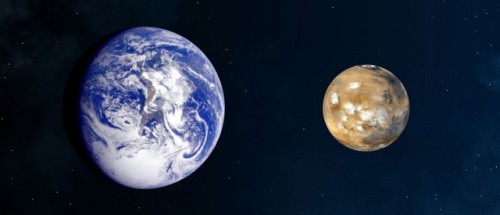
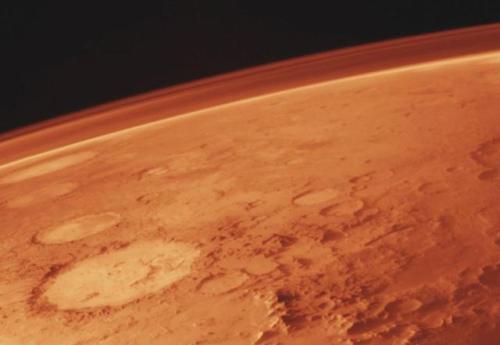
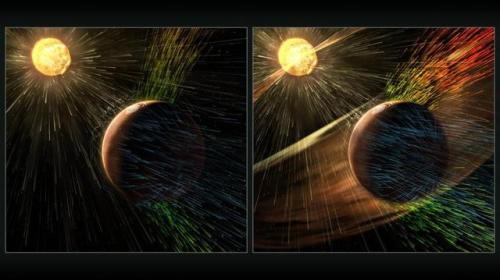
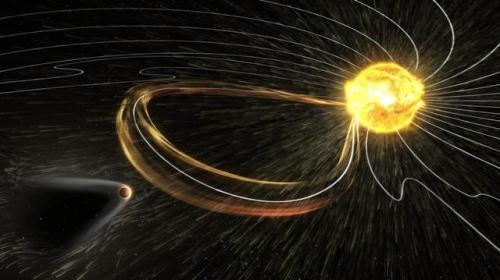
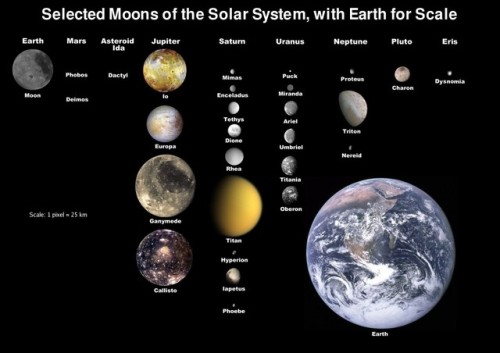
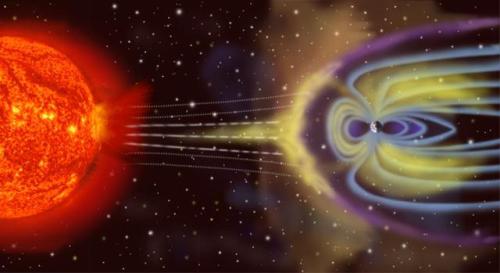
NASA’s MAVEN Discovers How Mars Lost Its Atmosphere
“The good news for us, mind you, is that the magnetic field here on Earth shows no sign of ceasing anytime soon. The dynamo in the core may do things like flip and reverse, swapping north-and-south magnetic poles, but we should continue to stay protected from the solar wind far into the foreseeable future: for billions of years (at least) to be sure. We could, conceivably, one day suffer the same fate as Mars, but our mass, our rotation and our active, dynamic core should keep the Earth’s magnetic field in business for at least as long as the Sun shines!”
If you had taken a trip to our Solar System four billion years ago, you would have found two worlds with liquid water oceans, temperate atmospheres and all the conditions we believe are needed for life. Earth would have been one of them, but Mars would have met all those criteria, too. It was long suspected that something happened to Mars around a billion years into the Solar System’s history that caused it to lose its atmosphere, something that should still be going on today. Thanks to NASA’s Maven mission, we’ve measured this atmospheric stripping by the Sun for the first time, and we’ve reached a few incredible conclusions, including that in about two billion years, Mars will be completely airless, and that if we were to terraform Mars today, it would hang onto this new atmosphere for millions of years.
Come get the full story of how Mars lost its atmosphere, and learn what NASA’s Maven mission has taught us so far!
What Is The Zone System: A Practical Guide

If you want us to put it in the simplest words possible, the Zone System is a helps us get the right exposure in all our photos, every time, without fail, even in the strangest light settings, and without a trusty matrix meter. It is a magical system conceived of by none other than Ansel Adams himself, along with photographer Fred Archer in the late 1930s. As the father of landscape describes himself, the Zone System is “not an invention of mine; it is a codification of the principles of sensitometry, worked out by Fred Archer and myself at the Art Center School in Los Angeles, around 1939-40.” These masters of photography created the Zone System to help us expose in tricky lighting situations where the dynamic range is out of whack, or the lighting is fooling your light meter into creating exposures that are too bright or too dark.
The Zone System was originally developed for black and white sheet film, which was the only type used in those days. Sheet film was individually developed on standard exposure papers, but today we have color roll film that can be mass developed on papers with varying exposures. The Zone system is as much applicable to these “modern” methods as they were to the film it was created for, and can even help digital photographers get perfect exposures. And guess what? Digital photographers, the Zone System can work for you too!
Why do you Need the Zone System
Technically you probably don’t. However, for those of you who are exposure perfectionists, the Zone System is extremely effective in measuring different tones and the dynamic range of a frame that you are about to shoot. It helps you make the perfect exposure with just a spot meter to work with. This gives you immense control over what you’re shooting. You don’t just make guesses at what the right exposure might be, or waste film bracketing “just in case”. Thus, you can easily figure out when you require extra lighting, and what kind and amount of lighting that might be, or whether there is need for a fill flash to get the right brightness. It can also help you figure out if you need graduated neutral density filters.
The zone system is highly beneficial in capturing accurate images when the camera is unable to set the exposure to an accurate reading, so that you get to decide what your image will turn out like, and you know exactly how it will look before you make the exposure.
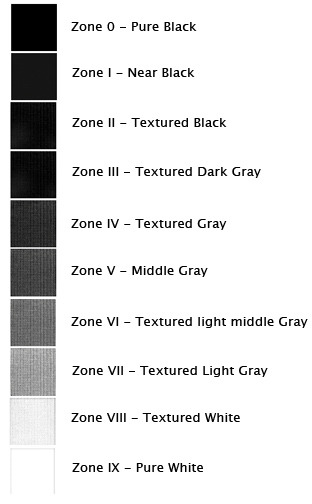
How does the Zone System Work?
A camera’s metering system measures accurate exposure readings by focusing on the middle grey tones, which is 18% grey. This grey is the average of black and white. So, when you are shooting in a bright area, your camera will try to dim the light by bringing it down to the average and making the image underexposed in the process. Similarly, when you are shooting in a dark area, your camera will try to increase the brightness of the image, making it over-exposed. Understanding this mechanism is crucial to understanding how the zone system can be used.
Keep reading
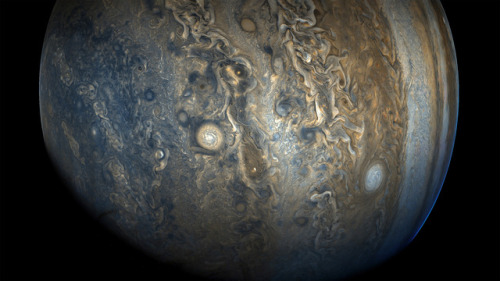
What a stunner! See Jupiter’s southern hemisphere in beautiful detail in this new citizen-scientist-processed JunoCam image.
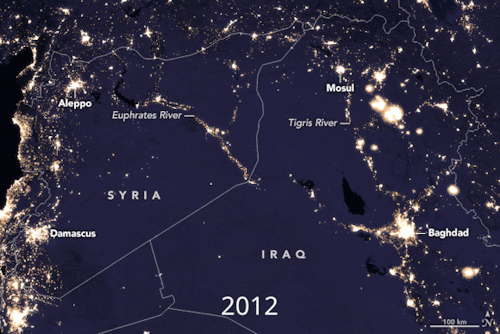
Night lights change in the Middle East between 2012 and 2016
via @nasa



“JUNO PROBE MAKES HISTORY BY ENTERING JUPITER’S ORBIT AFTER FIVE-YEAR JOURNEY”
Last night, NASA and its Juno probe made history by entering a new probe in orbit around Jupiter. The Juno spacecraft, which had left Earth five years ago, finally entered Jovian orbit after a 35 minute rocket engine manoeuvre to slow down its approach to the planet and get caught by its gravity. Unlike other engine firings in the past, Juno’s manoeuvre was especially dangerous since no previous spacecraft had ever dared to pass so close to Jupiter; its intense radiation belts can destroy unprotected electronics. Luckily, since the probe was built like a tank with titanium shielding, a few minutes later, a sequence of tones transmitted from the spacecraft confirmed the braking manoeuvre had been a smashing success prompting wild cheering at NASA’s mission control in Pasadena, California. “All stations on Juno co-ord, we have the tone for burn cut-off on Delta B,” Juno Mission Control had announced. “Roger Juno, welcome to Jupiter.” Juno’s main objective is to sense Jupiter’s structure and chemistry to gather clues on how the gas giant formed some four-and-a-half-billion years ago. However, much of this observation will not take place until mid-October when Juno performs a second rocket engine burn to tighten its orbit to just 14 days. By then, Juno will be able to answer some interesting questions about the planet including where it formed in the early Solar System and whether Jupiter has a solid core or a core made of compressed gas. After the mission ends, Juno is scheduled to dive into Jupiter’s atmosphere in February 2018 to ensure that there is no possibility of it crashing into and contaminating any of Jupiter’s large moons.
Read more about this fascinating story on: http://www.bbc.com/news/science-environment-36710768
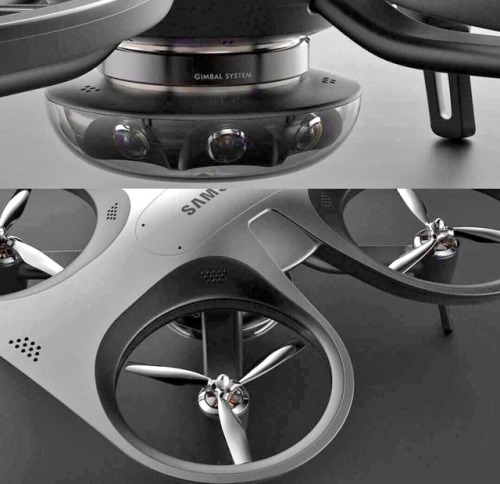
Possible 360° camera drone by Samsung?
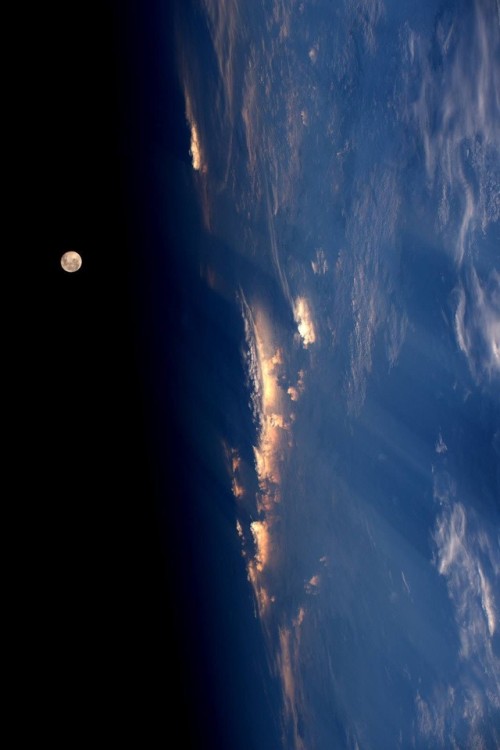
Space Station View of the Full Moon
Credit: NASA & ISS
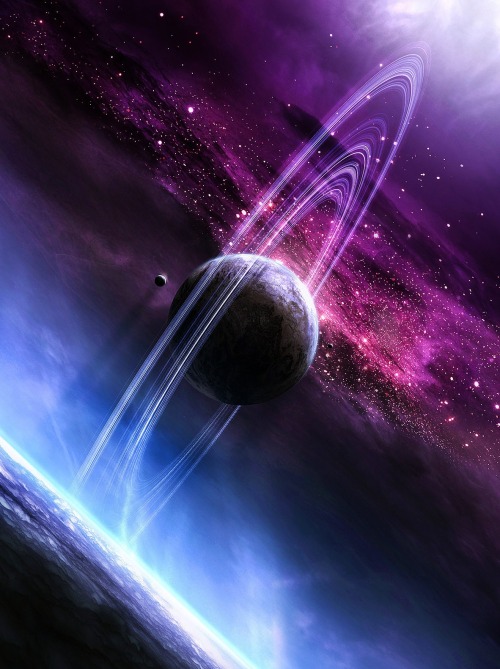
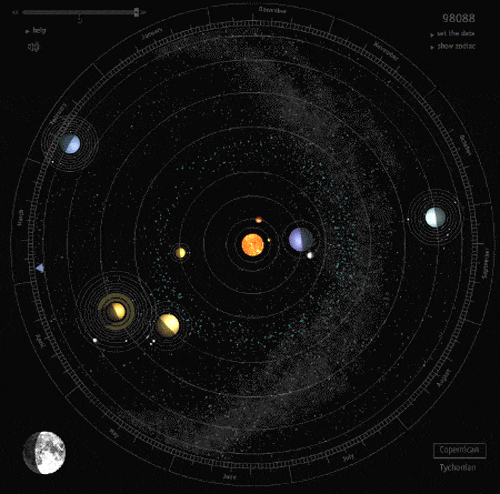
-
 zandraart liked this · 2 years ago
zandraart liked this · 2 years ago -
 oldladydot reblogged this · 2 years ago
oldladydot reblogged this · 2 years ago -
 singeroftalesvoiceofages liked this · 6 years ago
singeroftalesvoiceofages liked this · 6 years ago -
 astrotidbits-blog reblogged this · 8 years ago
astrotidbits-blog reblogged this · 8 years ago -
 astrotidbits-blog reblogged this · 8 years ago
astrotidbits-blog reblogged this · 8 years ago -
 tanzakariya reblogged this · 8 years ago
tanzakariya reblogged this · 8 years ago -
 bigaddicts liked this · 8 years ago
bigaddicts liked this · 8 years ago -
 atrumdeus reblogged this · 8 years ago
atrumdeus reblogged this · 8 years ago -
 rhvwr1234 liked this · 8 years ago
rhvwr1234 liked this · 8 years ago -
 kitzakat liked this · 8 years ago
kitzakat liked this · 8 years ago -
 amorphousrevenant reblogged this · 8 years ago
amorphousrevenant reblogged this · 8 years ago -
 neuvirtualoasis reblogged this · 8 years ago
neuvirtualoasis reblogged this · 8 years ago -
 bob1956rgk liked this · 8 years ago
bob1956rgk liked this · 8 years ago -
 desordures reblogged this · 8 years ago
desordures reblogged this · 8 years ago -
 mrcat032 liked this · 8 years ago
mrcat032 liked this · 8 years ago -
 thatsprettyneat-o reblogged this · 8 years ago
thatsprettyneat-o reblogged this · 8 years ago -
 flangepastefondle liked this · 8 years ago
flangepastefondle liked this · 8 years ago -
 ccstjosh liked this · 8 years ago
ccstjosh liked this · 8 years ago -
 ocdhuacheng reblogged this · 8 years ago
ocdhuacheng reblogged this · 8 years ago -
 thatdudemcgly reblogged this · 8 years ago
thatdudemcgly reblogged this · 8 years ago -
 donman2112 liked this · 8 years ago
donman2112 liked this · 8 years ago -
 ten0fswords liked this · 8 years ago
ten0fswords liked this · 8 years ago -
 areyouastableslut reblogged this · 8 years ago
areyouastableslut reblogged this · 8 years ago -
 donnie-bangarang reblogged this · 8 years ago
donnie-bangarang reblogged this · 8 years ago -
 quasigeostrophy reblogged this · 8 years ago
quasigeostrophy reblogged this · 8 years ago -
 quasigeostrophy liked this · 8 years ago
quasigeostrophy liked this · 8 years ago -
 cobaltfirefly liked this · 8 years ago
cobaltfirefly liked this · 8 years ago -
 sweetness-n-patootie reblogged this · 8 years ago
sweetness-n-patootie reblogged this · 8 years ago -
 cloakedsparrow reblogged this · 8 years ago
cloakedsparrow reblogged this · 8 years ago -
 sergeithechiefdesigner reblogged this · 8 years ago
sergeithechiefdesigner reblogged this · 8 years ago -
 imfbsl liked this · 8 years ago
imfbsl liked this · 8 years ago -
 patzelenkaguitar reblogged this · 8 years ago
patzelenkaguitar reblogged this · 8 years ago -
 morak00 liked this · 8 years ago
morak00 liked this · 8 years ago -
 againagainagai liked this · 8 years ago
againagainagai liked this · 8 years ago -
 rodzilla-world reblogged this · 8 years ago
rodzilla-world reblogged this · 8 years ago